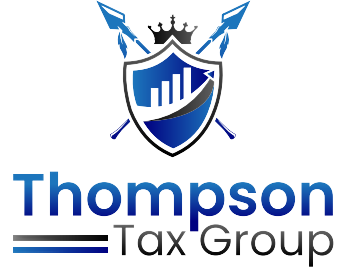
By meeting specific IRS requirements, short-term rental owners can treat their property losses as non-passive and use them to offset ordinary income—no matter how much they earn. With the right strategy and documentation, this powerful tax advantage can create significant savings for W-2 employees and investors alike.
At Thompson Tax Group LLC, we help real estate investors and small business owners stay ahead of tax changes. Contact us today to ensure you’re prepared for 2025 and beyond!
Introduction: Why Short-Term Rentals Are a Tax Game-Changer
When most people think of real estate tax strategies, long-term rental losses and real estate professional status (REPS) usually come to mind. But for many W-2 earners and high-income individuals, these strategies fall short—literally.
Here’s why: Unless you qualify as a real estate professional, losses from long-term rentals are considered passive and can only offset passive income—not your W-2 or business income. And even then, the passive loss allowance is limited to $25,000 per year and begins to phase out once your modified adjusted gross income (MAGI) exceeds $100,000. By $150,000, that deduction is entirely gone.
Enter the short-term rental (STR) strategy, often called the “STR loophole.” When executed correctly, this strategy allows investors to use real estate losses to offset W-2 income—without needing REPS status and without being subject to the $25,000 passive loss limit.
The Tax Advantage of Short-Term Rentals
Short-term rentals (like those listed on Airbnb or Vrbo) operate under different tax rules than long-term rentals. Under certain conditions, a short-term rental can be treated as a non-passive activity, meaning the losses it generates can offset any type of income—including W-2 wages, business income, or capital gains.
In simple terms: if your STR generates a large depreciation-based loss, and you materially participate in the activity, you could reduce your taxable income—no matter how much you earn.
Requirements to Unlock the STR Loophole
But this isn’t a “set it and forget it” situation. The IRS has laid out specific criteria that you must meet annually to take advantage of this strategy.
Let’s break down those requirements:
1. Average Rental Period Must Be 7 Days or Less
To qualify as a short-term rental for tax purposes, the average guest stay must be 7 days or less.
-
It’s okay if someone stays for 9 or 10 days occasionally, as long as the average for the year is 7 or fewer days.
-
You can balance longer stays with shorter ones (1- or 2-night bookings) to bring the average down.
This is the foundation of STR qualification—fail this, and you’re back in passive activity territory.
2. No Significant Personal Services During Stays
You cannot provide hotel-like services to your guests during their stay, or your rental will be considered a business subject to self-employment tax.
Examples of prohibited services during the stay:
-
Daily maid service
-
On-demand cooking
-
Concierge services
-
Personal laundry
However, services before check-in and after check-out (such as cleaning or stocking supplies) are perfectly fine.
3. You Must Materially Participate
Here’s where many investors get tripped up. You must demonstrate material participation in the rental activity. This means you were actively involved in the operation of the rental during the year.
The IRS provides 7 different material participation tests, but most STR investors rely on this one:
You must participate in the activity for more than 100 hours, and more than anyone else.
Key Notes:
-
If you have a property manager, this test is almost impossible to meet.
-
If your cleaner logs 120 hours and you only log 119, you fail—even though you meet the 100-hour minimum.
-
But if you log 121 hours and they log 120? You pass.
4. Keep a Detailed Time Log
Your participation must be well-documented. The IRS doesn’t take your word for it.
What counts toward your hours:
-
Communicating with guests
-
Booking management
-
Performing or supervising cleaning (outside of guest stays)
-
Repairs, maintenance, and supply runs
-
Marketing or listing management
What doesn’t count:
-
Travel time to/from the property
-
Education or research
-
Planning future investments
Also, be sure to track contractor hours (cleaners, handymen, etc.) so you can prove you did more work than they did.
We recommend keeping a daily logbook or spreadsheet documenting:
-
Date
-
Hours worked
-
Description of task
If audited, this log becomes your best defense.
Who Benefits Most from This Strategy?
This STR tax strategy is especially powerful for:
-
High-income W-2 earners (doctors, lawyers, executives, tech professionals)
-
Investors who don’t qualify as real estate professionals
-
Taxpayers looking to create or expand depreciation-based losses
-
Individuals wanting to shelter capital gains from other investments
For example, if your STR generates a $60,000 loss from depreciation and you materially participate, that full $60,000 can offset your W-2 income—even if you make $400,000 a year.
Bonus: Cost Segregation Can Supercharge This Strategy
With the return of bonus depreciation in 2025. Pairing your STR with a cost segregation study can increase your upfront depreciation deductions.
Cost segregation allows you to:
-
Accelerate depreciation on certain assets (furniture, appliances, etc.)
-
Potentially create six-figure paper losses in year one
Combined with material participation, this allows investors to wipe out large portions of their taxable income in the year the STR is placed into service.
Final Thoughts
The short-term rental strategy is one of the most effective and accessible tools in the tax planning toolbox—when done right. But it comes with rules, nuance, and documentation requirements that many overlook.
If you’re earning good money from a W-2 job or other active business and you’re looking to get real estate losses working for you immediately, the STR loophole may be the key. But it’s not DIY territory.
